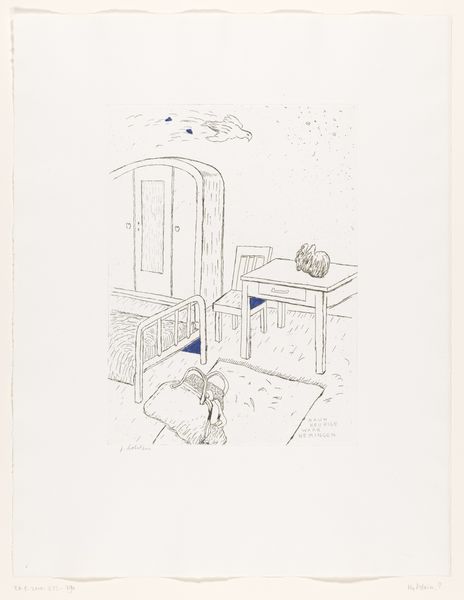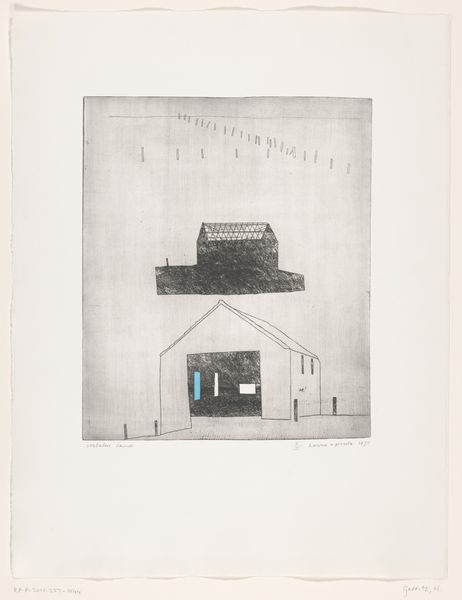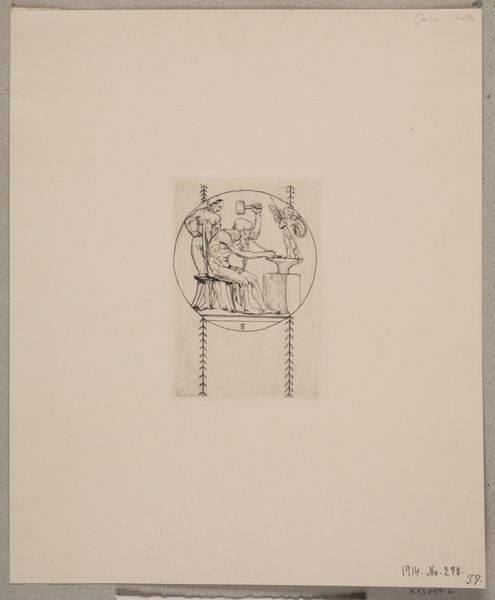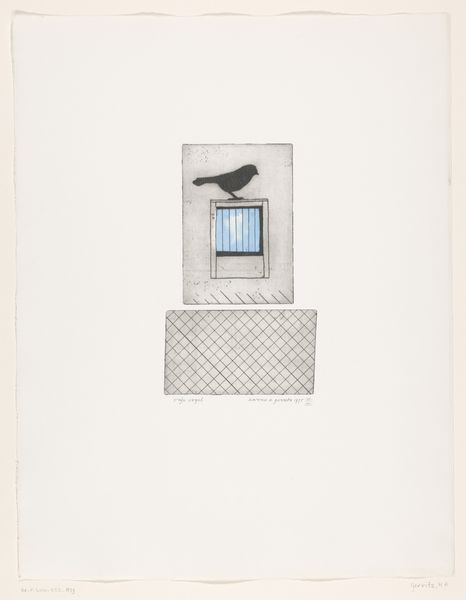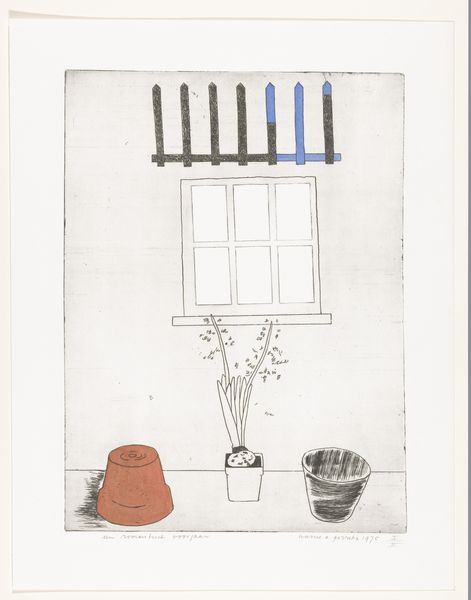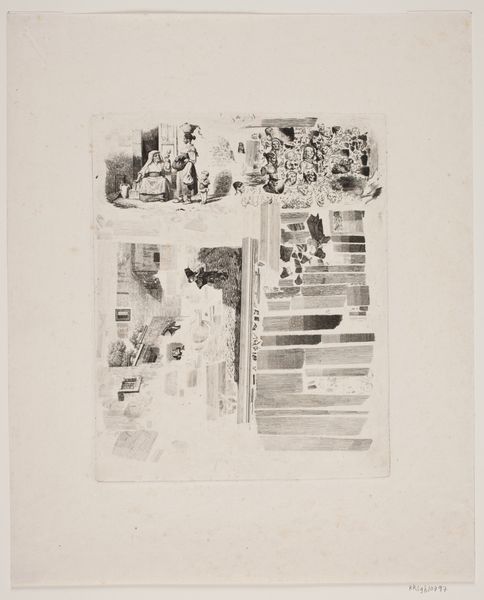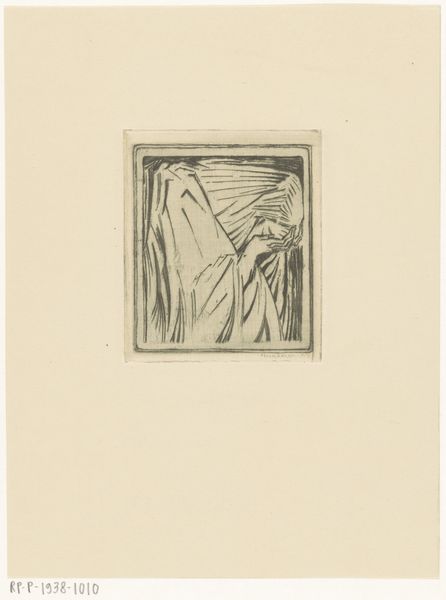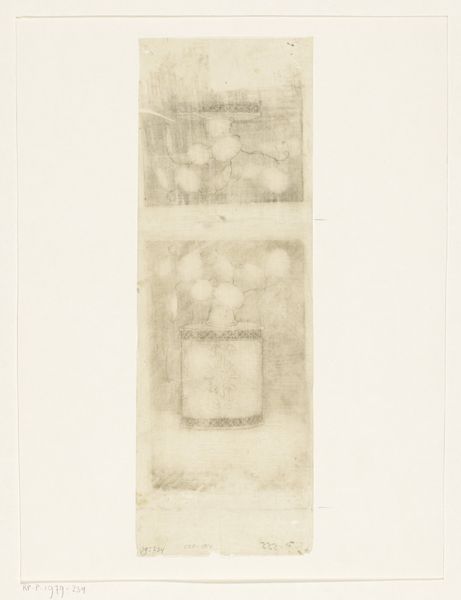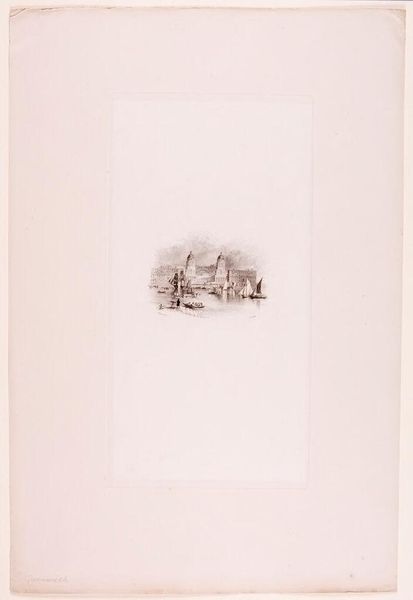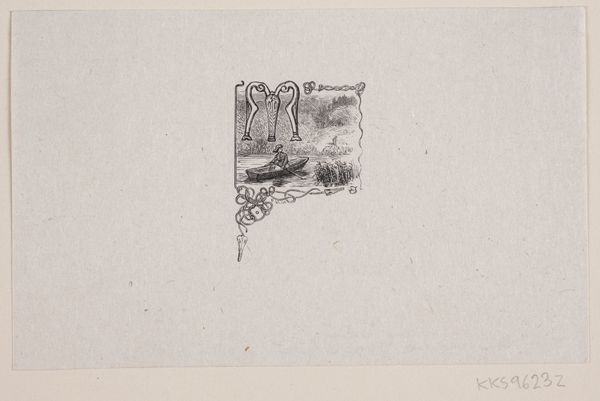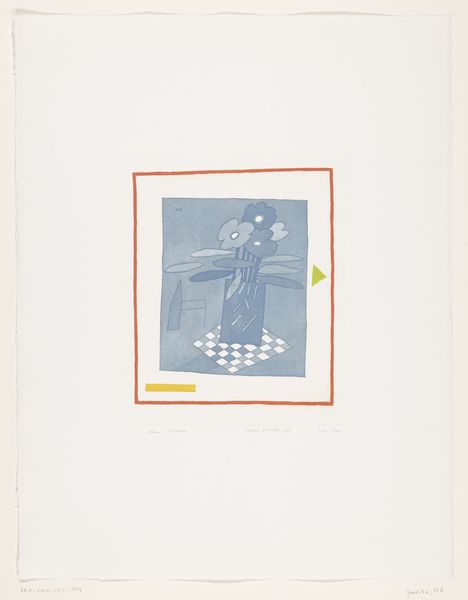
drawing, print, etching, paper, ink
#
drawing
# print
#
etching
#
landscape
#
figuration
#
paper
#
ink
#
line
Dimensions: height 654 mm, width 508 mm, height 372 mm, width 244 mm
Copyright: Rijks Museum: Open Domain
Editor: Harrie Gerritz’s “Gesloten hekje,” or "Closed Gate" from 1975 is a delicate etching. The composition feels so sparse, almost melancholic. What symbolic meaning do you draw from it? Curator: The gate itself is, of course, a potent symbol. It represents not just physical boundaries, but also transitions, choices, and even secrets. Closed, it suggests exclusion, perhaps even a longing for what's beyond. How does the line work contribute to that feeling for you? Editor: The lines are so simple and fragile, especially the trees in the background. It makes me think about vulnerability. Is there a sense of Dutch identity tied to landscape imagery like this? Curator: Absolutely. Think about the history of landscape painting in the Netherlands. Often, seemingly simple scenes carry deep cultural weight. The horizon line itself, so prominent here, becomes a symbol of the Dutch struggle with the sea, the constant negotiation between land and water. Do you see other details that might speak to Dutch identity? Editor: The blue rope! It’s such a small detail, but the only real pop of color. Maybe that rope represents hope, or even a memory. The gate feels temporary. Curator: I agree. The gate, secured by rope rather than hinges, has a provisional quality, almost an impermanence. It is a landscape of subtle signs, where the viewer is invited to complete the narrative. Does that resonate with you? Editor: It does. The simple depiction holds complexity I did not see at first glance. Curator: The power of a seemingly simple image often lies in its ability to evoke a range of complex associations. It is a landscape rich with possibilities for interpretation, reminding us of the symbolic weight everyday objects can carry.
Comments
No comments
Be the first to comment and join the conversation on the ultimate creative platform.
